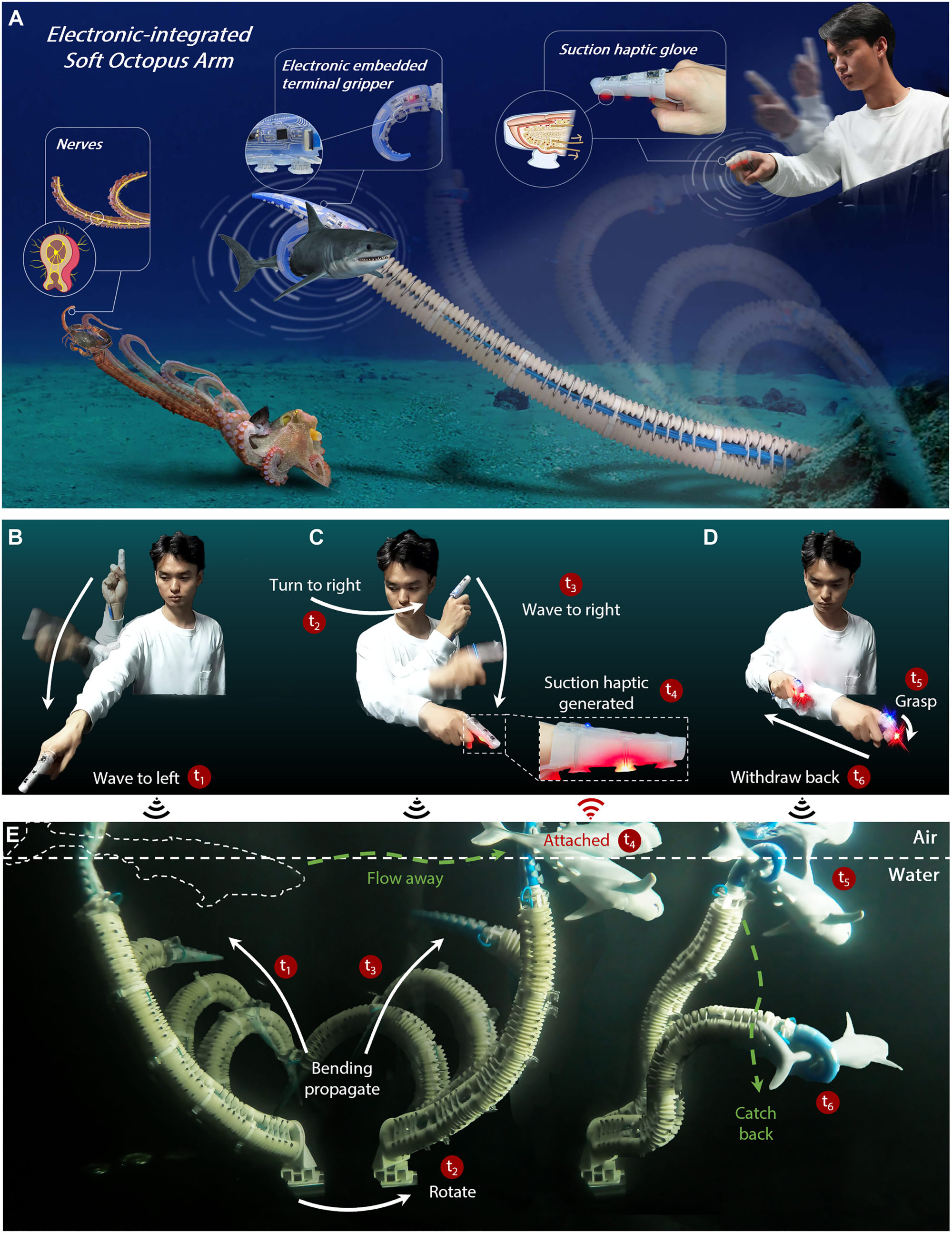Electronics-integrated robotic limb combines the octopus’ natural agility with cutting-edge technology for a ‘broader range of capturing’. Adaptability and dexterity make the E-SOAM ideal for tasks in confined or delicate environments, project lead from Beihang University says. — SCMP
A research team led by a professor from China’s Beihang University has created a soft robotic arm that closely mimics the intricate movements of an octopus, representing a step forward for advanced human-robot interaction.
The device could also transform medical and elderly care services, as well as delicate underwater operations.
Capable of being controlled with a finger glove, the highly pliable robotic device could one day give users a shot at playing “Doctor Octopus” from the Marvel films, whose “multiple arms perform various tasks simultaneously”, project lead Wen Li said.
The electronics-integrated soft robotic octopus arm (E-SOAM) combines the natural agility of an octopus with cutting-edge technology.
The team behind the invention wrote about their work in a recently published article in the peer-reviewed journal Science Robotics.
“A key innovation of this robotic design is its departure from traditional mechanical arms that rely on end-effectors for interaction. Instead, the octopus-inspired movements of the E-SOAM enable a broader range of capturing,” Wen said.
The E-SOAM replicates the “bend propagation” motion observed in the tentacles of sea creatures like octopuses, which reach and grasp their prey. It can extend up to 1½ times its original length with a flexibility that mimics those creatures’ movement and perform similarly intricate tasks in confined spaces.
A soft robotic system must integrate sensory, signal processing, and communication components to interact with the world around it. But incorporating circuits into this extendable soft-bodied robot presented another challenge, as traditional rigid circuits and bendable ordinary flexible circuits could not maintain functionality during extensive stretching.
This problem was resolved through the design and manufacture of electronic circuits based on liquid metals.
The arm’s circuits are designed to withstand significant stretching, which is essential for maintaining functionality in highly deformed states. This advancement lets the robotic arm process the complex sensory data behind bending and suction actions, and detect temperature changes.
“The E-SOAM’s interactivity is further enhanced by a wearable finger glove, which allows human operators to remotely control the robotic arm,” Wen said.
The glove provides tactile feedback, mimicking the sensations of touch and suction, thus enabling precise manipulation of the arm both in air and underwater. Operators using the glove can feel the suction at the tentacles’ ends, while the tactile feedback also varies with the intensity of suction.

In scenarios demonstrated by the researchers, an operator was able to grab a toy shark only with a wave and grasping movement of his fingers.
Apart from being a technological achievement, the feature is also expected to bring more intuitive human-robot interactions a step closer.
“We believe in the future, operators could manipulate multiple tentacles through touch, potentially realising a scenario akin to the fictional Doctor Octopus, where multiple arms perform various tasks simultaneously,” Wen said.
E-SOAM’s adaptability and dexterity make it an ideal candidate for tasks in confined or delicate environments, such as in healthcare and underwater exploration. “The arm’s design and functionality are especially promising for medical and elderly care services, as well as for non-destructive underwater operations,” Wen added.
The success of the E-SOAM provided valuable insights into the development of future bio-inspired autonomous systems that could seamlessly interact with humans and their environments, the team said.
According to their paper, “future enhancements might include integrating wearable fluidic pumps or vibration systems to achieve a fully wireless and untethered human-machine interface”. – South China Morning Post





